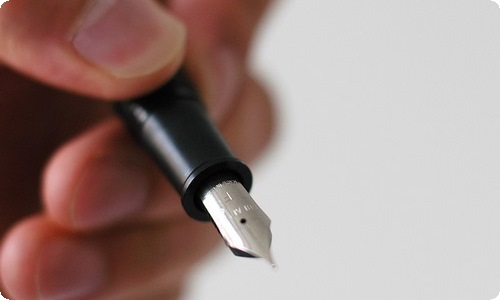
First aid英语教案
First aid
教学目标
Teaching aims
通过本单元的教学,学生了解有关急救的常识,在生活中如何处理一些突发事件,然后实施紧急救护等总结,归纳情态动词的用法,如:should/shouldn’t; must/mustn’t ;ought to等表示义务和责任的用法。
Teaching important and difficult points
1.Words
knee, still, bite (bit, bitten/bit), lay (laid, laid), mouth-to-mouth, bum, cut, electric, container pool, breathe, within, handkerchief, wound, safety, wire, guard, sideway, firm, firmly wherever, stomach, injure, injured, injury, poison, quantity, nearby
2.Phrases
first aid, ought to, medical care, by mistake, pay attention to, in a short while, deal with, take it easy, running water, out of one’s reach, throw up, hold up
3. Useful expressions
We must carry her to the side of the road.
You mustn’t move someone if they are badly hurt.
Parents should know some first aid.
You shouldn’t get up if you are badly hurt.
I ought to go home.
I have to cook supper for my grandmother.
4. Grammar
Revise Modal Verbs : must, should
Study Modal Verb: ought to
教学建议
课文建议
教师安排中国学习联盟声朗读课文,理解课文含义,通过阅读,教师对学生可小组讨论,提问,口语练习,复述急救方法等,教师给学生展示几组图片,帮助学生学会一般的急救措施和家庭安全常识。
写作建议
教师布置学生写作的题目及要求,教师给学生几分钟时间进行讨论,教师给学生一些关键的词语,如:breathe, First Aid Centre, handkerchief, mouth-to mouth so on.之后,教师给学生十分钟左右时间开始写,最后教师请几位同学朗读,教师给予讲评。
教材分析
本单元是围绕First aid, Safety in the home,展开话题。对话课中描述两个学生在街上看到一个女孩从自行车上摔下来的经过,同时对话中使用了情态动词的用法,课文中附有图片和口语练习,帮助学生了解急救的重要性及有关的常识。
重点难点:
1. What should you do if a person has drunk poison by mistake? 假如有人误喝了毒药,你怎么办?
by mistake是固定词组,意为“错误地”,“无心地(做错了事)”。例如:
She put salt in her cup of coffee by mistake.她错将盐放入咖啡里了。
2. do with,deal with
二者都可以用来表示“处理”的意思
但是用于特殊疑问句的时候do with与what连用;deal with则与how连用。例如:
你会怎样处理一个从自行车上摔倒而严重受伤的?
另外,do with还可表达别的意思。例如:
What did you do with my umbrella? (=Where did you put my umbrella?)
你把我的伞放到哪里去了?
What are we to do with this naughty boy? (=How are we to deal with this naughty boy?) 我们该怎样处置这个顽皮的男孩?
3. knock at, knock down & knock into的区别
knock at 指“敲打门窗”
I heard someone knocking at the door.我听见有人敲门。
Tom tried knocking at the window.汤姆试着敲了敲窗户。
knock down 指“……撞倒”
He nearly knocked me down at the corner.在拐角处,他几乎把我撞倒。
He was knocked down by a car. 他被汽车撞倒了。
knock into 指“碰倒,撞上某人”,也可指“偶然碰见”。
The child knocked into the teacher.那孩子撞到了老师身上。
He knocked into the chair in the dark.黑暗中他撞在了椅子上。
He didn't expect to knock into some of his friends here.他没有想到在这儿遇见一些朋友。
4. ask, demand, inquire, question & require
1)ask是一个常用词,表示“问”的意思。
Did you ask the price of that ten-speed bicycle?你打听过那辆十速自行车的价钱了吗?
2)demand含有强硬、断然的意味。
I demand that you leave this place at once.我要求你立即离开此地。
3)inquire 多用于较正式的语体,通常只表示打听消息,寻求答案。
He inquired of the girl the way to the railway station.他问那女孩到火车站怎么走。
4)question 常表示一连串问题,有时则有盘问,审问之意。
①The questioning of the prisoner went on for hours.对那个囚犯的审讯延续了好几个小时。
5)require有按照权利来“要求”或“命令”之意。
Since he was involved in the case, the court required his appearance.由于他与此案有关,法庭令他出庭。
5.breathe & breath
1)breathe 是动词,是“呼吸”的.意思。
He was breathing hard/heavily after racing for the train.他跑着赶上了火车,吃力地喘着气。
It is good to breathe fresh country air instead of city smoke.呼吸乡间新闻空气而不吸入城市烟尘是有益的。
▲注意以下几个习语的意思:
1)I can't concentrate with you breathing down my neck.你这样紧紧叮着我,使我精神无法集中。
2)Promise me you won't breathe a word of this to anyone.答应我别将此事泄漏给任何人。
3)The new manager has breathed fresh life into the company.新经理给公司带来了朝气。
2)breath是名词,也作“呼吸”解。
1)You can see people's breath on a cold day.冷天能看到人们呼出的空气。
2)His breath smelt of garlic.他呼出气中有蒜味。
▲注意以下习语的意思:
①Her smile is a breath of fresh air in this gloomy office.她的微笑给沉闷的办公室带来生气。
②Religion is the breath of life for her.宗教对她来说是不可缺少的精神支柱。
③It took us a few minutes to get our breath back after the race.赛跑后我们用了好几分钟才恢复了正常呼吸。
④The audience held their breath as the acrobat walked along the tightrope.杂技演员走钢丝时,观众们都屏住了呼吸。
⑤His heart condition makes him short(out) of breath.他心脏状况不佳使他呼吸急。
⑥He lost his breath in running.由于奔跑他几乎喘不上气。
语法:情态动词(Modal Verbs)
1) must
A.表示必须要干的事。如:
We must obey the rules.我们必须遵守规则。
You mustn’t talk like that.你可不能那样说话。
must也可以表达过去情况,主要用于间接引语中。
She said that we must wait a little while.她说我们必须要等一会儿。
B.表示一种推测(只用于肯定句中,语气比may要肯定得多)。
must have则表示对过去情况的推测。例如:
This must be Tom’s room. 这准是Tom的房间。
Jack must have gone there, hasn’t he? / didn’t he?杰克准是去过那儿了,对不对?
C.比较:have to也表示“必须”,但have to更强调客观需要,must着重说明主观看法。如:
We had to be there at 10 o’clock.我们得在10点到那儿。(客观需要)
We must be back before 10 o’clock.我们必须10点前回来。(主观认为)
有时也可互换:
We must / have to leave now.我们得走了。
must和have to的否定式即mustn’t和don’t have to意思完全不同。Mustn’t表示“不作某事”,有禁止的含义;don’t have to表示“不必要(作某事)”,含有“客观上无此必要”的意思。例如:
You mustn’t move someone if the person is badly hurt.如果这人受了重伤,你一定不要动他.
The person isn’t hurt at all. You don’t have to give him first aid.这个人根本就没有受伤,你不必给他进行急救。
2)need need作及物动词,和不定式连用:
need to do sth. 需要干某事
need也可做情态动词,主要用于否定句,即:
needn’t + v.不必干某事 例如:
You need to tell him the reason.你需要告诉他原因。
You needn’t tell him the reason. 你不必告诉他原因。
情态动词need也可用于疑问句,肯定回答对一般must,否定回答时用needn’t.
——Need I come? ——Yes,you must./No,you needn’t.
教学设计方案Lesson 29
Teaching Aims
1. Practise the dialogue.
2. Study the uses of same of the modal verbs.
3. Study the language points in the lesson.
4. Do the discussion practice in Part 2.
Step Ⅰ Revision and Warm Up
1) Revise ailments and parts of the body. the following; toothache, earache, headache, and stomachache. Say to the class:
I’ve got…and get them to complete the sentence. Point to parts of your body and say I’ve hurt my ( arm/foot/leg/back/hand).
2)You can ask the Ss for advice for all these ailments: ask what should I do? and encourage the class to make suggestions.
Step ⅡPresentation
Tell the Ss a story by saying that this morning when I was on my way to school, I saw an accident in the street. A man was knocked down by a bike. He was injured on his knees. (Teach the new words injure and knee here. ) Some people went to help and he was sent to the hospital soon. I think he will be all right soon.
Say to the Ss Today we’re going to read a dialogue and learn about another accident in the street.
Step Ⅲ Listening
1.T: Say to the Ss that Chen Wei and Susan are walking down the street when they see an accident. Let’s listen to the dialogue. After listening, you are going to answer two questions.
1). What was the accident?
2). What did the girl injure?
Get two Ss to answer the questions. Check the answers.
1). A child ran into the street and knocked a girl off her bicycle.2). Her knee hurts, her knees and her head hurt too.
2.Play the tape again. This time the Ss can open their books while listening.
Step Ⅳ Reading
1.Give the Ss a few more minutes to read the dialogue carefully. Then give them a few questions
1).Why does Susan not agree to carry the girl to the side of the road?
2) Who do you think will come in a moment? Why?
3) What was the girl going to do?
Answers:1)Probably Susan has learned something about first aid. People mustn’t move someone if they are badly hurt. They should leave the person where he or she is.
2) Some doctors and nurses will come. Because Chen Wei has just called the First Aida Centre.
3) The girl was going go cook supper for her grandmother.
2. Do Ex. 1 in the Workbook, answering the questions to the dialogue.
Step Ⅴ Practice
1. Put the following sentences on the Bb. Get them to pay more attention when they are practising the dialogue.
We must carry her to the side of the road.
You shouldn’t move someone if they are badly hurt.
You should/ shouldn’t…
I ought to go home.
I have to cook supper for my grandmother.
2. Get the Ss to practise the first half of the dialogue, encourage some pairs to do it in class. Then get them to do group work, practising the second half of the dialogue, ask some groups to do it in front of the class.
Step Ⅵ Discussion
1. Part 2. Read the instructions aloud and check that the Ss know what they have to do. To make the discussion easy going, get the Ss to make notes in two columns as follows:
DOS DONTS
leave the person where he/she is carry the person
telephone for help move the person
stay with the person let the person get up
tell the person not to worry
tell the person to stay still
Demonstrate a short dialogue with a good student. You can also ask questions: Should I move the person? Should I give the person anything to drink? (No.) Put the Ss in pairs and get them to have similar dialogues. If you wish, you can get one or two pairs to act out their conversations in front of the class.
2. Do Ex. 2, Picture 2 in the Workbook. Look at the picture very carefully and ask the Ss to discuss in pairs or groups. Then gel one student in each group to report their ideas to the whole class. Discuss with the whole class and see if they are right and if they can add something new.
Answers:
You must send the woman to the hospital immediately. Don’t argue with the driver. If she loses one third of her blood, she may die.
Step Ⅶ Summary
1. After learning the dialogue, we know something about the first aid and how to deal with some accidents when we meet them. In this unit and in the next period we will learn more about first aid.
2. Go through the language points in the dialogue.
1) Chen Wei and Susan are walking down the street when they see an accident.
2) That girl has fallen off her bicycle. A child ran into the street and knocked her off her bicycle.
3) I think she must be injured.
4) Leave her where she is.
5) You mustn’t move someone if they are badly hurt.
6) Take it easy.
7) I ought to go home.
Step Ⅷ Homework
1. Do Ex. 2, Picture in the Workbook as written work.
2. Do Ex. 4.
教学设计方案Lesson 30
Teaching aims
1. Learn about some more about first aid.
2. Finish reading two passages in Lesson 30.
3. Study the language points of Lesson 30.
4. Practise using the patterns: You must…/ You mustn’t …/ You should always…/ You should never…
5. Finish off the exercises in Workbook Lesson 30.
Teaching procedures
Step 1 Revision
1. Check the homework exercises. Ask the Ss to describe the pictures in Wb Lesson 29, Ex. 2.
2. Revise the dialogue in Lesson 29.
3. Check Ss’ understanding of the four words in SB Page 44, Part 1.
Step 2 Presentation
1.Show the Ss pictures at the head of the text and discuss the pictures. Say the man’s head was badly injured and is bleeding. The woman is trying to help him to stop the bleeding.
1)What can you do when you meet with such accidents?
2)Can you do some of the first aid to people?
2.Then tell the Ss Today we are going to read about first aid. What is first aid? It is the medical help which you give to somebody immediately after an accident. You do not have to be a doctor to give somebody first aid. But you have to know what to do.
Teaching procedures
Step 3 Reading
1. Give the Ss a few minutes to do the fast reading of the text. Ask one student to repeat the definition of first aid.
2. Give them a few more minutes to do further reading. Then do Ex. 1 in Wb Lesson 30. Answer the questions one by one and make sure that the SB can answer them correctly.
3. Put up two tables on the Bb, showing the notes of the three important things to do and the three pieces of advice on dealing with common injuries.
Number | Three Important Things To Do |
1 | Check that the person can breathe. |
2 | Try to start the breathing. |
3 | Try to stop the bleeding at once. |
Common injuries | Advice |
Animal bites | Wash the wound under cold running water. See a doctor as soon as possible. |
Burns | Cool the area of skin at once. Put dry clean cloth over the area of the burn. See a doctor. |
Cuts | Wash the area of the cut, dry it and cover it with dry clean cloth. |
Step 4.Language points
1)…you don’t have to be an doctor.
2) Check that the person can breathe. Open the mouth and make sure that there is no food at the back of the mouth.
3)Lay the person on his/her back.
4) Here is some advice for dealing with common injuries.
5) Cool the area of skin at once.
6) However, after a few hours of study you will manage to know enough to save other people’s lives.
7) If everyone in the country knew first aid, many lives would be saved.
Step 5 Oral practice
Part 4. Practise the {erases given with the whole class. Then demonstrate the pairwork with a good student, covering the text but looking at the pictures. Make sure that the SB are using the phrases correctly and listening for any common mistakes.
6 Homework
1. Do Ex. 2 as oral work.
2. Finish Ex. 3.
探究活动
Play a role
教师给学生话题进行表演,如:If you happen to see someone who has an accident, do you think you can make a right decision?
1)If the person is not breathing, 2) If the person is bleeding badly, 3)If someone is bitten by an animal,教师把学生分成几组讨论后,可到奖教室前面进行表演。

文档为doc格式



